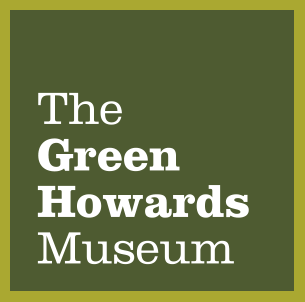
Fred, the fourth child of five to Ned and Ann Shaw, was born around 1884 at Slaithwaite near Huddersfield. His father Ned was a railway signal man and part time photographer. Two of Fred’s brothers would emigrate to Canada before the Great War began. Fred trained as a journeyman tailor and travelled to seek employment. Whilst in the Hawes district he met and married a girl from Hawes, Mary Elizabeth Blades, in November 1909.
Fred enlisted in Hawes in June 1916, joining the 9th Battalion Yorkshire Regiment. Fred went to France in September 1916. Private Fred Shaw was killed on the first day of The Battle of Messines on the 7th June 1917 aged 33. Fred’s body was never found and his name is commemorated on the Menin Gate at Ypres.
Sadly, just four and a half months after his father died, their son Jimmy died aged 5.
Explore more memories from the ribbon
-
Nellie Spindler
Nellie Spindler was born in Wakefield in September 1891. Nellie was her actual Christian name, being baptised on the 11th November 1891. In 1911 Nellie was a hospital nurse at the City Fever Hospital in Wakefield and from 1912 to 1915 was working at the Township Infirmary, Leeds. From November 1915 until May 1917 she was a staff nurse at Whittington Military Hospital in Litchfield. Nellie then worked as a Staff Nurse with the Queen Alexandra’s Imperial Military Nursing Service, which had been formed in 1902 from the Army Nursing Service of 1881. From May 1917 she was a staff nurse at Stationary Hospital in Abbeville, France. Neillie also worked as a staff nurse in No. 44 Casualty Clearing Station, a British evacuation hospital located at Brandhoek, a small hamlet near Poperinghe in Belgium. It had a high mortality rate as No 44 CCS was closer to the front line than most and also close to a railway line and munitions dump. It was shelled often as the enemy tried to destroy the rail network thus preventing more munitions reaching the front line. On the 31st July 1917 the Third Battle of Ypres began. On that day alone a total of 6869 casualties were registered in the four Casualty Clearing Stations and surgeons carried out 582 operations. On Tuesday, 21st August, 1917 the hospital was shelled and at 11 o’clock in the morning Nellie was hit by shrapnel. She became unconscious immediately and although tended by her fellow nurses she…
-
Ewen George Sinclair-Maclagan
Ewen George Sinclair-Maclagan was born on the 24th December 1868 in Edinburgh. He was educated at the United Services College, Westward Ho! North Devon and commissioned as 2nd Lieutenant in the Border Regiment in 1898. He served in India, including the expedition to Waziristan in 1894-5, and was promoted Captain in 1898. He saw action in the 2nd Boer War (1899-1902) as an Adjutant in the 1st Battalion Border Regiment. He was severely wounded at Spion Kop, mentioned in dispatches and received the Distinguished Service Order. In 1901 he was posted to Australia when their Army was being organised, being appointed Adjutant to the New South Wales Scottish Rifles. On the 29th January 1902 he married Edith Kathleen, daughter of Major General Sir George French, at St’ Andrew’s Anglican Cathedral in Sydney. They would have one daughter. In 1904 Maclagan resumed regimental duty in Britain. Promoted Major in 1908 he then transferred to the Yorkshire Regiment. In 1910 Major General Sir William Bridges, who had known Maclagan in Australia, was recruiting for staff for the Royal Military College in Duntroon, Canberra. He made Maclagan director of drill with the rank of Lieutenant-Colonel. When Bridges raised the 1st Division Australian Imperial Force (AIF) he chose Maclagan to command the 3rd Infantry Brigade. On the 25th April 1915 landed at Gallipoli. A ridge leading from Anzac Cove is named after him. He would stay on the peninsula until evacuated sick in August 1915. He did not return to his Brigade in Egypt…
-
Harold Moore
Harold Moore was born around 1898 at Mirkport near Hawes, with his twin sister Hilda. He was the second youngest of a family of ten children to Richard and Mary Moore. In 1901 they were living at Mirkpot Farm on the Hawes-Ingleton road where Richard was a farmer and stonemason. By 1914 they were living at Catriggs Farm near Hawes. Harold enlisted in Leyburn in May 1918 joining the 9th Battalion Yorkshire Regiment. He arrived in France on October 11th, just one month from the Armistice and the cessation of hostilities. As Harold joined his Battalion, it had just come out of front line action in the Premont area between St. Quentin and Cambrai. A week later on the 24th October the Battalion was involved in capturing a machine gun post in a wooded area. During this action Harold, along with a number of other casualties, was severely wounded and later died. He had been in the war just 13 days. Private Harold Moore is buried in the Premont British Cemetery SE of Cambrai. He was just 20 years old.
